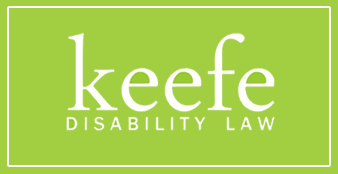Subway bread contains food additive E927. A February 2014 internet petition gained 50,000 signatures to remove it and Subway agreed to remove the additive.
I like a “foot long” sandwich at Subway every now and then, especially when on sale for $5.00. But I have no special loyalty to Subway or its products. Subway is said to be changing the formula for its bread. What is azodicarbonamide and why would Subway stop its use in baking bread?
Crashing around the web this month, a petition started by the “Food Babe” website has gathered 50,000 “signatures” urging Subway to drop a certain food additive from its recipe for bread. The petition argued that Subway uses azodicarbonamide in its baking flour, that the substance is also used for manufacturing rubber and plastics, and is prohibited in Europe due to concern that it may be asthmagenic, and other concerns.
Subway lists all the ingredients in its line up, so Subway itself has disclosed this ingredient to its customers.
Known as food additive E927, azodicarbonamide is a flour bleaching agent and improving agent. It reacts with moist flour as an oxidizing agent, and the chemical reaction with flour during the process produces biurea, and other reaction products. The U.S. Food and Drug Administration has determined that the product is safe in cereal flour, and in baking bread. In the U.S Code of Federal Regulations the Food and Drug Administration says this about using azdiocarbonamide as a food additive:
| C.F.R. Title 21 Sec. 172.806 Azodicarbonamide. |
| The food additive azodicarbonamide may be safely used in food in accordance with the following prescribed conditions: (a) It is used or intended for use: (1) As an aging and bleaching ingredient in cereal flour in an amount not to exceed 2.05 grams per 100 pounds of flour (0.0045 percent; 45 parts per million). (2) As a dough conditioner in bread baking in a total amount not to exceed 0.0045 percent (45 parts per million) by weight of the flour used, including any quantity of azodicarbonamide added to flour in accordance with paragraph (a)(1) of this section. |
Food Babe has not argued or disclosed that Subway uses this additive in amounts beyond 45 ppm, the amount that FDA considers safe. Apparently, Food Babes just disagrees with the FDA as to the product’s safety in food at 45 ppm. Did the 50,000 petition signers overreact to the alarmist claims made by Food Babes in its #NoWaySubway campaign?
Yoga pads and rubber boots!
Food Babe argues that the food additive should not be used for bread because it is used for plastics and rubber. Heck, any food product could be useful for making non food products, so I don’t see why the fact that it can used for other things even hints that it might be inappropriate for food. The seaweed (Irish Sea Moss) I used to rake at low tide during high school was used as an emulsifier in ice cream, rubber and plastics, so what?
Chicago Chemical Spill!
Food Babe reports on a “spill” of “full strength” or concentrated packages of this food additive in Chicago, (a million parts per million?) with precautions taken to avoid vapors from burning product. That spill was in 2001. Not sure how that informs us as to the safety of 45 parts per million in food. Think about it, you have fluoride in your drinking water to prevent decay in your teeth. Fluoride is added to public drinking water in a concentration of up to 1.5 milligrams of fluoride per liter of water. However, if you were to ingest fluoride “full strength” it would make you sick. Ditto azodicarbonamide, so what? Attributes of the full strength product do not disclose the risk or danger of the product at 45 ppm.
Banned in Europe!
Let’s see why the European food safety regulators have limited food additive E927/ azodicarbonamide. In the United Kingdom, the Health and Safety Executive precludes azodicarbonamide from food because it considers this product a possible cause of asthma. Let’s put that in context. What are the other “causes” identified by the Executive? Well, flour is one. Grain is another. Speaking of context, these are considered causes of asthma in a workplace setting, where the danger is inhalation of the product. Eating E927 in your bread is not seen by the Executive as a cause of asthma, but breathing it if you work in the bakery is. Similarly, the World Health Organization has not addressed its use in food, but has required warnings for the product in the context of workplace exposure in work environments where the product is manufactured, and warns that workplace exposure to the product is linked to “respiratory issues, allergies, and asthma”. In other words if you work at the chemical plant where they make the “full strength” product, you need to know these risks. World Health Organization does not claim a risk for use of the product at 45 ppm as a food additive, nor does it make a connection between use of the product as a food product and “respiratory issues, allergies and asthma”
Baby Food Jars.
Finally the European Commission issued a Directive ten years ago, on January 6, 2004, restricted azodicarbonamide from use in blowing plastics that are intended to become in contact with food, such as the plastic gasket on the lid of baby food jars. This EC directive does not address the use of E927/azodicarbonamide in baking bread, rather it addresses its use as a blowing agent in making plastics, where the reaction product, or decomposition product is found to be semicarbazide. In the baby food tested, the E927/ azodicarbonamide in the plastic gasket leached semicarbazide into the baby food, and the Commission was not able to determine that semicarbazide was safe in baby food on account of studies showing “weak carcinogenic activity in laboratory animals, and weak genotoxicity in vitro.” The EC banned the use of E927/azodicarbonamide food additive despite its conclusion that it was unable to conclude whether the decomposition agent from blown plastic, semicarbazide, poses any carcinogenic risk to humans.
There is no indication that Subways use of this food additive, which is Generally Regarded As Safe (GRAS) by the U.S. Food and Drug Administration, is used by Subway in ppm that is more than 45 ppm. So, Subway could mount a public relations defense and say that the federal government’s guidelines indicate that the product is safe as used by them. However, Subway should drop food additive E927 for public relations reasons even if the food safety issue is exaggerated and in fact, bogus.
If you suffer from asthma, it might be wise to pass up a job offer from the bakery at Subway (or any other bakery, for that matter), but you don't need to switch to Quiznos for your sandwiches. The case for having subway drop food additive E927, despite 50,000 signatures appears to be based on alarmist sensational claims, and might just lack a solid scientific basis at this point.
If you do now suffer from asthma, your medical condition by itself usually would not be disabling. However, combined with other problems you may have, asthma may prevent you from holding or keeping a full time job. If you are unable to work due to a physical or mental condition, Keefe Disability Law is here to help. Call today to speak with a claim representative and we will provide a free case evaluation to see how our legal team can help with your disability case at 800-776-2929.
Are You Looking for a Social Security Disability Attorney in Boston, MA?
If you are looking to apply for social security disability, you need to speak with an experienced social security disability lawyer as soon as possible. Please contact us online or call our Natick Office directly at 888.904.6847 to schedule your free consultation.

